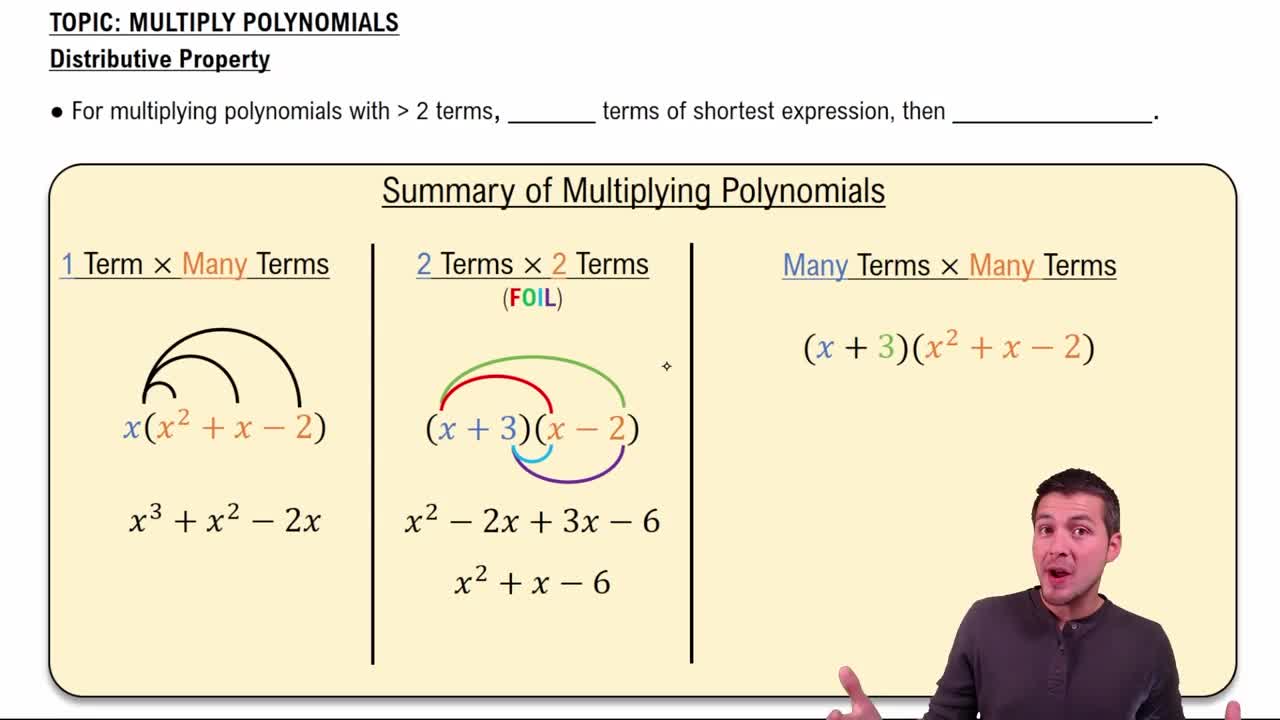Here are the essential concepts you must grasp in order to answer the question correctly.
Exponential Rules
Exponential rules are fundamental properties that govern the manipulation of expressions involving exponents. Key rules include the product of powers, quotient of powers, and power of a power, which dictate how to simplify expressions like (a^m * a^n = a^(m+n)) and (a^m / a^n = a^(m-n)). Understanding these rules is essential for simplifying complex exponential expressions.
Recommended video:
Cramer's Rule - 2 Equations with 2 Unknowns
Negative Exponents
Negative exponents indicate the reciprocal of the base raised to the opposite positive exponent. For example, a^(-n) = 1/(a^n). This concept is crucial when simplifying expressions, as it allows for the transformation of negative exponents into a more manageable form, facilitating further simplification of the overall expression.
Recommended video:
Distributive Property of Exponents
The distributive property of exponents states that when raising a product to a power, each factor in the product is raised to that power. For instance, (ab)^n = a^n * b^n. This property is vital for simplifying expressions like (x^m * y^n)^p, as it allows for the distribution of the exponent across the terms, leading to a clearer and more simplified expression.
Recommended video:
Multiply Polynomials Using the Distributive Property
 Verified step by step guidance
Verified step by step guidance Verified Solution
Verified Solution

